 Artwork by Cliff W. (Grade 6, Pennsylvania), winner of the Annual NOAA Marine Debris Program Art Contest.
Celebrate Back to School!
Thank you to the many of you who have responded to our survey! We are hard at work analyzing results and identifying updates to make this resource more helpful and useful for each and every one of you. If you are still interested in providing your feedback but have not yet had a chance, the survey is still open here (OMB Control No.: 0690-0030)!
Here are some highlights since the last newsletter:
- We’ve attended and presented at a number of education conferences! It’s great to connect directly with educators like you.
- Lots of materials are now available on our website! Check out One Cool Earth’s Earth Genius lesson plans or Sea Education Association’s Trash Shouldn’t Splash Toolkit.
And here’s what we’re looking forward to most in the coming months:
To help support your back to school efforts, check out the education posts on the Marine Debris Program blog or the NOAA Education Back to School page. Plus, this newsletter’s featured craft is an upcycling activity to help your learning environment stay organized and reduce waste.
Enthusiastically,
Alexandria Brake, NOAA Marine Debris Program Education Specialist
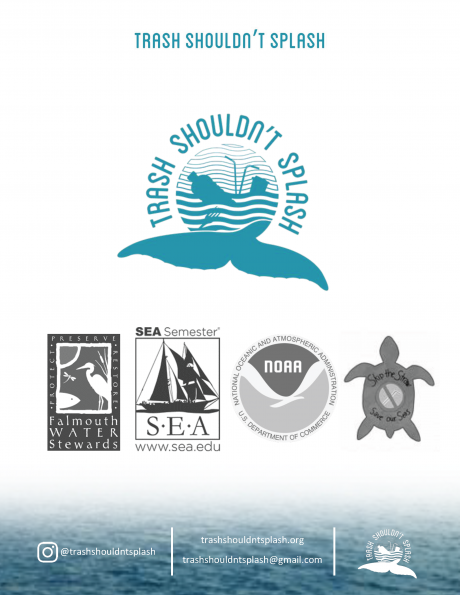 Support student changemaking efforts with this community-centered single-use plastic reduction toolkit for students (Credit: Sea Education Association).
This toolkit, created by Falmouth Water Stewards/Skip the Straw and Sea Education Association (SEA) with funding provided by the NOAA Marine Debris Program, provides strategies, best practices, and examples of successful, student-driven campaigns to reduce single-use plastics in communities. The materials in this toolkit include educational information about marine debris types, sources, and prevention; suggestions for creating logos and other communication materials; tips and scripts for interacting with restaurants; and templates for letters to community members and organizations to promote student efforts.
Learn more
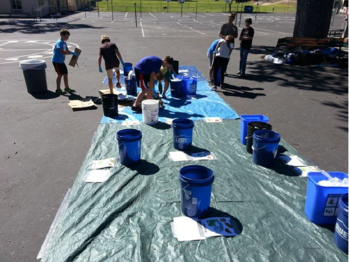 Students sort waste as part of the Earth Genius "Waste Audit" lesson to assess the current waste stream and then design and implement solutions for reducing waste on campus (Credit: One Cool Earth).
One Cool Earth, in partnership with the NOAA Marine Debris Program and Bay Watershed Education and Training program, created a series of standards-aligned lesson plans exploring issues related to marine debris and environmental stewardship. Each of these lessons focus on experiential, project-based learning to support student engagement and action.
Learn more
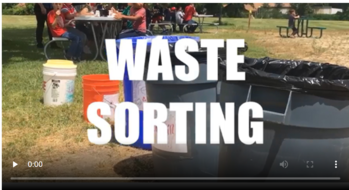 Help students build their stewardship and responsibility while reducing waste through waste sorting stations (Credit: One Cool Earth).
This video, created by One Cool Earth with support from the NOAA Marine Debris Program, walks through an easy way to help your school reduce waste: organizing waste stations! This strategy guides students in sorting different types of lunchroom waste, including landfill trash, recyclable materials, organic waste, and more. Waste stations help reduce debris by maximizing recycling and composting, while also helping students understand the importance of disposing of their waste responsibly.
Learn more
 Albatrosses are just one of many species of seabirds that are affected by marine debris (Credit: NOAA).
Check out the NOAA Office of National Marine Sanctuaries’ newest resource collection all about seabirds!
Birds are a vital part of marine ecosystems and valuable indicators of ecosystem health. The protected areas of the National Marine Sanctuary System serve as pit stops for many species of migratory bird, offering rest and food along their travels. Seabirds are also often impacted by marine debris, and you can explore those impacts in several of the resources featured in this collection, including Winged Ambassadors and Makani: The Albatross that Cares for the Land.
Learn more about the Sanctuaries Seabirds Resource Collection
Learn more about how marine debris impacts birds on the Marine Debris Program blog
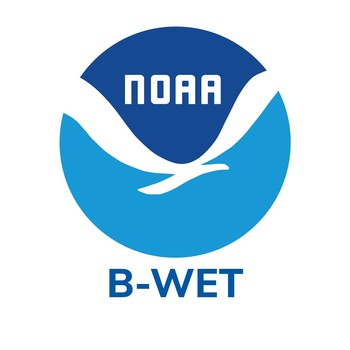 The B-WET program is an environmental education program that promotes place-based experiential learning for K–12 students and related professional development for teachers (Credit: NOAA).
Bay Watershed Education and Training (B-WET) funding is provided through competitive grants that promote Meaningful Watershed Educational Experiences (MWEEs). The B-WET program offers regional funding opportunities through local NOAA host offices. Regional funding opportunities are generally published in late summer or fall each year. The Great Lakes funding opportunity is now open, and stay tuned for funding from other regions to reopen soon.
Learn more about the Great Lakes B-WET funding opportunity
B-WET is celebrating it's 20-year anniversary this year! Learn more about the program's history and growth on the B-WET website.
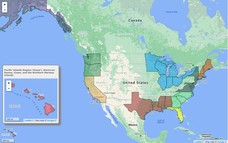
Check out some marine debris projects around the country.
|
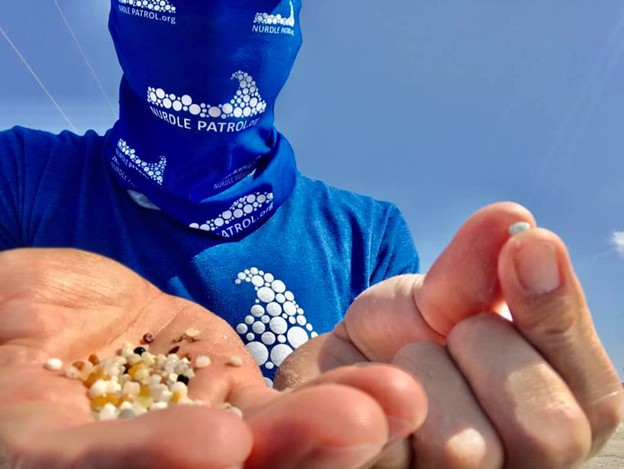 Jace Tunnell shows nurdle sizes, shapes, and colors (Credit: Mission-Aransas NERR Staff).
Small plastic pellets, or nurdles, are the raw material for almost everything made of plastic. Unfortunately, before they make it to plastic production, they can be released into the environment where they pollute habitats and harm wildlife. With a grant from the NOAA Marine Debris Program, Nurdle Patrol, a citizen science project run by the Mission-Aransas National Estuarine Research Reserve at the University of Texas Marine Science Institute in Port Aransas, Texas, is expanding efforts throughout Mexico.
Learn more
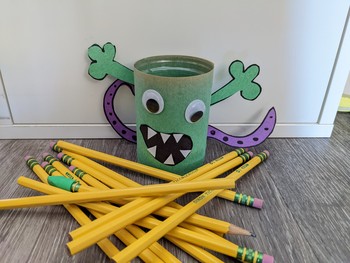 Keep this monster fed by putting your pencils away after using them! (Credit: NOAA).
Whether you teach in a formal classroom, a nature center, or virtually, keeping your space organized can be a real challenge. These activities can keep your materials organized, get students engaged in a fun craft, and repurpose hard-to-recycle plastic bottles.
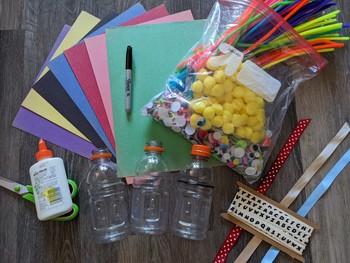 Here are all the supplies you'll need: some bottles, construction paper, scissors, glue, scraps of ribbon, and any fun decorations you want to add (Credit: NOAA).
Supplies Needed:
- Small plastic beverage bottles
- Construction paper
- Scissors* (child-safe scissors won't be strong enough to cut the bottles, so the bottle cutting should be completed by adults or with adult supervision)
- Craft glue
- Scraps of ribbon, yarn, or string
- Googly eyes, pom poms, or other craft decorations (optional)
- Pens, pencils, or anything you need to organize!
Steps:
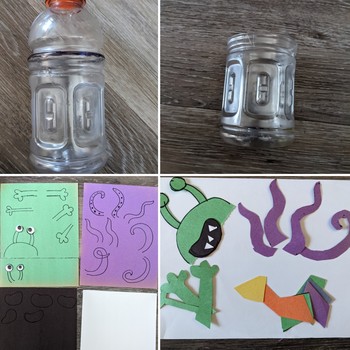 The steps to creating your pencil cups: On the top row, plan and cut the top off of your bottle. On the bottom row, plan and cut out your decorations (Credit: NOAA).
1. Cut the round top off of your bottle, so you have a straight cylinder with one end open.
2. Cut out your decorations! I wanted to create a pencil monster, but you could create collages, animals, or any other feature you want. (And hold onto your scraps to create a cool stained-glass collage!) You can also wrap scraps of ribbon or string around your cup to create a pattern.
3. Glue or tape your decorations to the pencil cup.
4. Get organized!
 Ta-da! Wrangle your writing utensils in style! (Credit: NOAA).
Looking for a craft from a previous newsletter? Check out our NOAA Marine Debris Program Newsletter Archive page to revisit all of our past activities.
Interested in more ways to help prevent marine debris at home, at school, or at the store? Dive into all kinds of ideas on our How to Help page.
Have any feedback on our content?
Please complete this survey on the NOAA Marine Debris Program Education Newsletter if you have any questions, ideas, or hopes for our marine debris materials.
Contact us at marinedebris.web@noaa.gov
Subscribe to the NOAA Marine Debris Program Education Newsletter
Subscribe to the NOAA Marine Debris Program Monthly Newsletter
Subscribe to the Marine Debris Blog
|